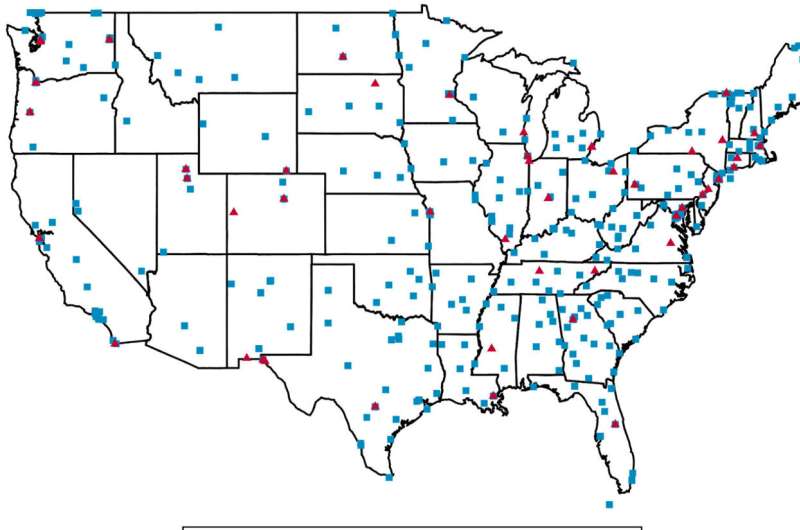This article has been reviewed according to Science X's editorial process and policies. Editors have highlighted the following attributes while ensuring the content's credibility:
fact-checked
trusted source
proofread
Study finds no effect of LEED certification on federal buildings' energy efficiency

In 2010, the U.S. government announced a multi-billion-dollar plan to improve the energy efficiency of its buildings, including a focus on LEED certification. Used worldwide, LEED—Leadership in Energy and Environmental Design—is a system that rates buildings on energy efficiency. A new study examined the effects of LEED certification on energy efficiency in federal buildings. The study found no effect on average energy consumption, primarily because many other factors come into play when rating energy.
The study, by researchers at Carnegie Mellon University (CMU), was published in the Journal of Environmental Economics and Management.
"Energy use is just one of a number of attributes that is scored under the LEED program," explains Edson Severnini, associate professor of economics and public policy at CMU's Heinz College, who coauthored the study. "If energy efficiency is the primary goal, LEED certification may not be the most effective means to reach that goal."
LEED certification, developed in 1998 by the U.S. Green Building Council (USGBC), is one of the most sought after green certifications in the building sector. Buildings are LEED certified based on the sum of scores across six attributes, including energy and atmosphere, materials and resources, indoor environmental quality, sustainable sites, water efficiency, and innovation in operators; the energy component accounts for the largest share at more than 30%.
This study sought to determine the causal impact of LEED certification on energy consumption in federally owned buildings between 1990 and 2019.
Commercial buildings owned by the federal government have historically consumed more energy than privately owned buildings.
Over the last 20 years, energy efficiency has been an increasing priority for the U.S. government, and in 2009, the American Recovery and Reinvestment Act and Executive Order 13514 promoted the green design of federal buildings. In response, in 2010, the General Services Administration (GSA) announced a $5.5 billion plan to improve the energy performance of its buildings. The plan included efforts to retrofit existing federally owned buildings and obtain LEED certification for those retrofits.
Researchers compared buildings that would be LEED certified before and after retrofitting with similar buildings that were not LEED certified. They used data from three sources:
- The GSA Energy Usage Analysis System for all federally owned buildings
- The Green Building Information Gateway, a database developed by the USGBC, and
- The National Oceanic and Atmospheric Administration (for information on how weather affects buildings).
The study found no effect of LEED certification on average energy consumption in federal buildings. The authors suggest this is because energy use, while weighted heavily in LEED scoring, is just one of the six attributes measured. Buildings with higher energy scores had lower energy consumption and greater energy efficiency after retrofitting. But some other attributes, such as higher water scores, decreased energy efficiency after retrofitting.
Other factors that might have affected energy consumption include sensors in water-efficient bathrooms and water-efficient landscaping systems. These kinds of tradeoffs across LEED attributes seemed to account for the absence of energy savings, according to the authors.
In LEED certification, the energy score is based on features such as high-efficiency heating, ventilation, and air conditioning, and use of green power; the water score is based on features such as water-saving faucets and high-efficiency irrigation technology.
"Our findings have significant implications for policy," says Karen Clay, professor of economics and public policy at CMU's Heinz College, who led the study.
"Even though the USGBC is revising the LEED scoreboard to increase emphasis on the energy usage, the inherent trade-offs are likely to remain. As the Biden Administration looks at how best to invest in energy efficiency, they should be sure to design policies that provide the intended incentives."
More information: Karen Clay et al, Does LEED certification save energy? Evidence from retrofitted federal buildings, Journal of Environmental Economics and Management (2023). DOI: 10.1016/j.jeem.2023.102866
Provided by Carnegie Mellon University




















